There’s nothing quite as disheartening as walking out to your garden one morning, coffee in hand, only to find that something’s been feasting on your plants overnight. Perfect leaves are now riddled with holes, new seedlings look like they’ve been cut off at the base, and suddenly, your once-thriving garden looks like a buffet for bugs. It’s one of those moments that test every gardener’s patience.
I’ve been there — watching my tomato plants wilt after being attacked by aphids, or seeing my tender lettuce devoured by slugs. But after a few seasons of frustration, I realized that reaching for chemical sprays wasn’t the answer. The key was working with nature, not against it.
Organic pest control isn’t just about avoiding chemicals; it’s about restoring balance to your garden. Once I began using natural remedies and encouraging beneficial insects, the difference was remarkable. So today, I’m sharing ten of the most common garden pests — and how you can send them packing using organic methods that are safe, effective, and sustainable.
Why Choose Organic Pest Control?
Choosing organic pest control is about more than just avoiding harsh chemicals. When we use synthetic pesticides, we’re often exposing ourselves and our families to residues that can linger on fruits and vegetables. Even after washing, those residues can still find their way into our meals. That’s not something I want to serve at my dinner table, and I’m guessing you don’t either.
Beyond our own health, organic pest control also supports the delicate ecosystem in your garden. Many chemical sprays kill indiscriminately — meaning they wipe out beneficial insects like bees, ladybugs, and butterflies alongside the pests. These helpful insects play a vital role in pollination and natural pest management, so protecting them is key to a thriving garden.
And there’s the environmental angle, too. Chemicals don’t just vanish once they’re sprayed. They can seep into the soil, run off into water systems, and harm wildlife. By using organic alternatives, you create a more balanced, self-sustaining garden where every element — from the soil microbes to the pollinators — works together naturally.
10 Common Garden Pests and How to Get Rid of Them Organically
1. Aphids
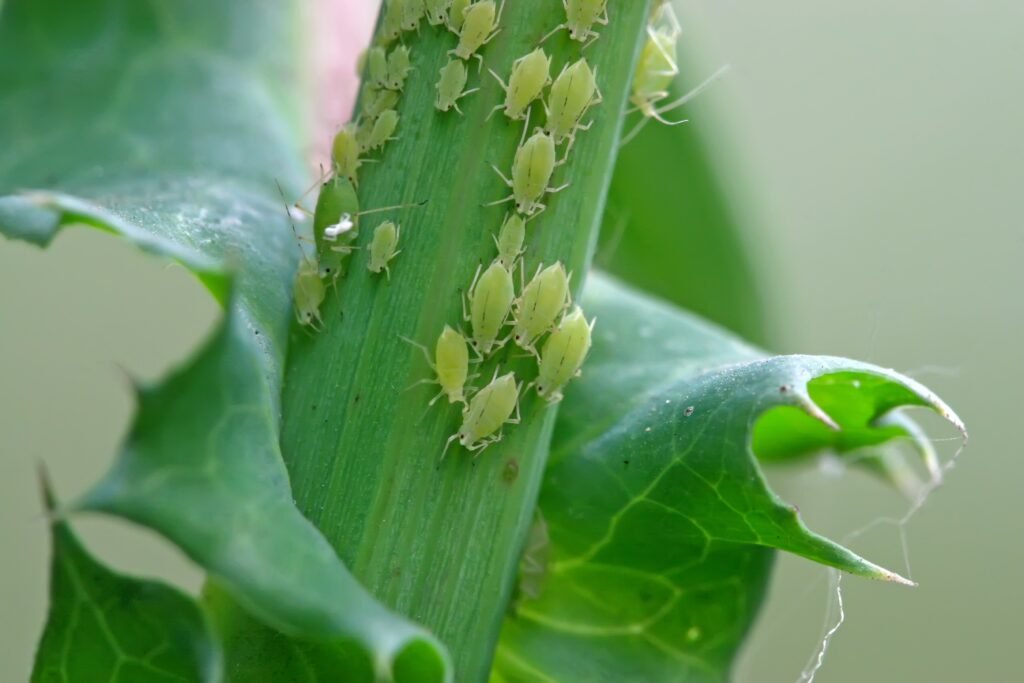
Aphids are tiny, soft-bodied insects that come in green, black, white, or even pink. They’re masters at sucking the sap out of tender new growth, which causes leaves to curl, yellow, or become distorted. The sticky residue they leave behind, called honeydew, can also attract ants and lead to sooty mold. I used to find clusters of them hiding under my rose leaves — small but destructive.
The first step is recognizing the problem early. If your plant leaves are curling or look sticky, flip them over to check for aphids. A quick blast of water from the hose can knock them off, but for heavier infestations, mix a teaspoon of mild liquid soap in a liter of water and spray it directly on them. The soap suffocates the insects without harming your plants.
For a more long-term solution, encourage natural predators like ladybugs or lacewings. You can buy them from garden centers or simply attract them with flowering plants like dill, fennel, and yarrow. Neem oil also works wonders — it interrupts their life cycle and keeps populations in check without harming beneficial insects.
2. Slugs and Snails
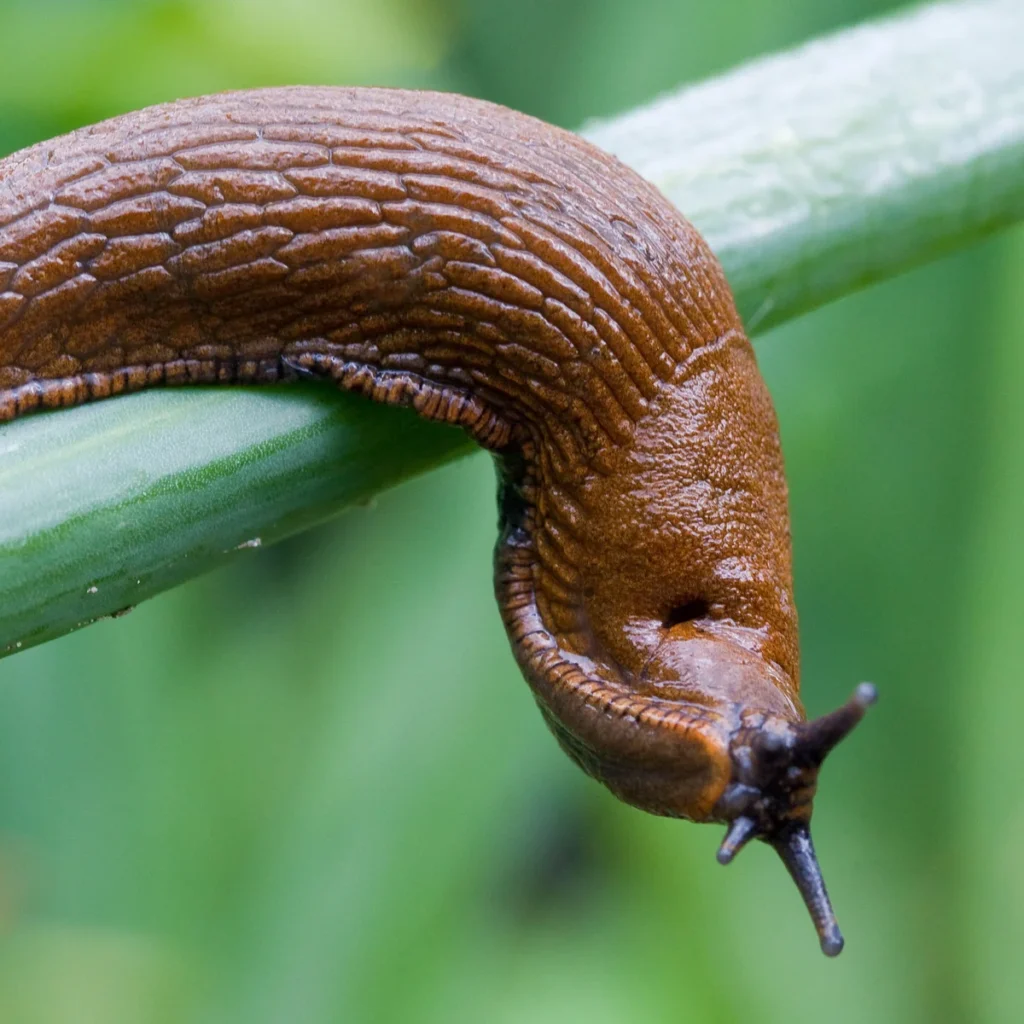
These slimy invaders are every gardener’s nightmare, especially after a rainy night. Slugs and snails love tender seedlings and soft leaves, leaving behind irregular holes and that unmistakable silvery slime trail. They’re sneaky, hiding during the day and coming out to feast under the cover of darkness.
If you’ve ever lost a row of lettuce overnight, slugs are likely the culprit. To manage them organically, start by handpicking them in the evening with a flashlight — it’s oddly satisfying, I promise. Beer traps are another simple trick: sink a shallow dish into the soil and fill it with beer. The smell lures them in, and they drown before reaching your plants.
To keep them away, create barriers with crushed eggshells or diatomaceous earth around the base of your plants. Copper tape also deters them because it gives off a mild electric shock when they crawl over it. Finally, invite natural predators like toads, ducks, and even some birds into your garden — they’ll happily take care of your slug problem for you.
3. Whiteflies
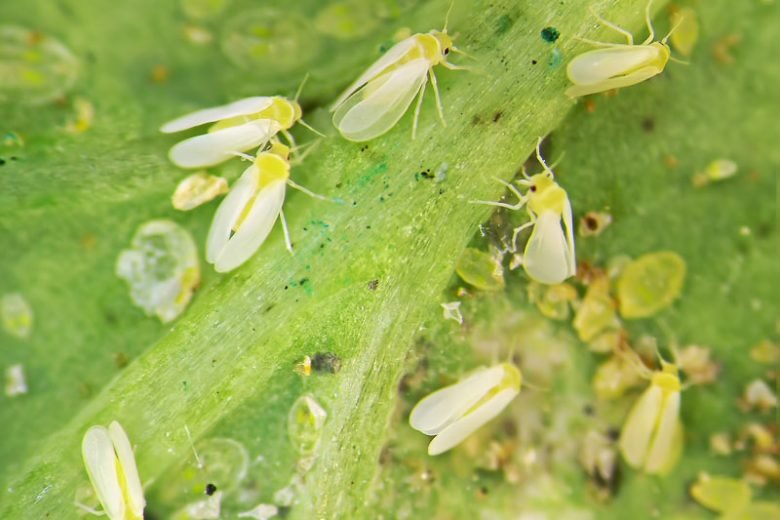
Whiteflies are tiny, moth-like insects that thrive on the underside of leaves, sucking out plant juices and spreading disease. You’ll notice leaves turning yellow and sticky, and when you shake the plant, a cloud of tiny white bugs will flutter away. I once had them take over my tomato plants — it was like watching a mini snowstorm every time I brushed against the leaves.
To get ahead of them, use yellow sticky traps to catch adults. These simple traps are surprisingly effective and give you a sense of how bad the infestation is. Spraying neem oil or insecticidal soap also helps disrupt their life cycle. Make sure to cover both sides of the leaves for the best results.
If you want to go the extra mile, introduce parasitic wasps like Encarsia formosa, which specifically target whiteflies. They may sound intimidating, but they’re harmless to people and a lifesaver for your plants. Keeping your garden well-ventilated and avoiding over-fertilization also helps prevent future outbreaks.
4. Caterpillars

Caterpillars might turn into beautiful butterflies, but before that, they’re hungry little leaf-chompers. They can strip a plant bare in no time, especially vegetables like kale, cabbage, and tomatoes. The telltale signs are ragged leaves and dark droppings — often spotted before you even see the culprits.
The most straightforward way to control caterpillars organically is to pick them off by hand. It’s not glamorous work, but it’s effective. If the infestation is large, try using Bacillus thuringiensis (Bt), a naturally occurring bacteria that only affects caterpillars and is safe for other insects and humans.
Encouraging birds to visit your garden is another excellent way to keep populations in check. Set up bird feeders and baths nearby — they’ll reward you by eating the pests. You can also use companion planting; herbs like dill and fennel attract predatory insects that feed on caterpillar eggs.
5. Spider Mites
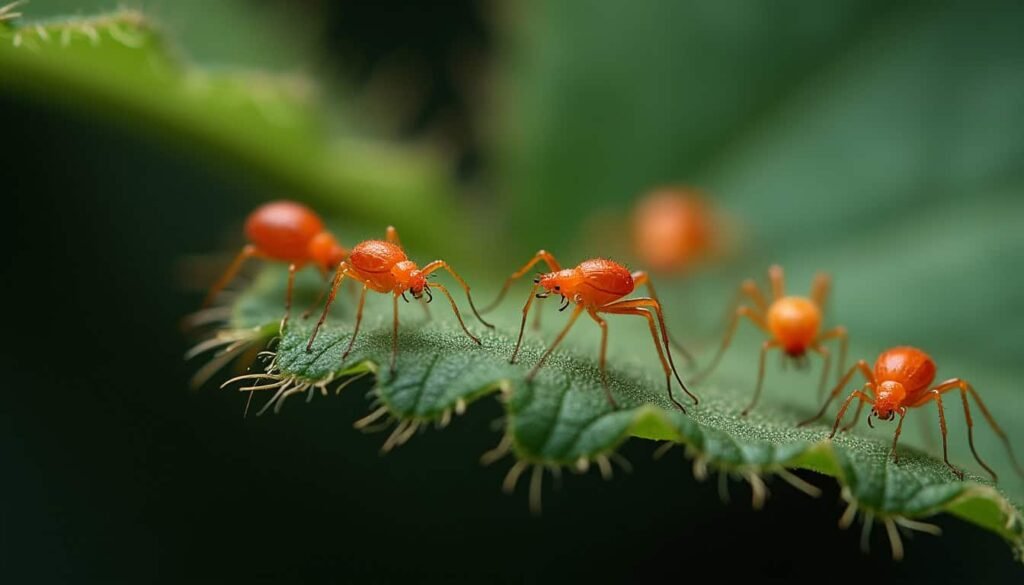
Spider mites are so tiny that you might not see them until your plant starts to suffer. They love hot, dry environments and often attack houseplants or greenhouse crops. The signs are easy to spot: yellow-speckled leaves, fine webbing, and overall plant decline.
I once lost an entire batch of basil to these microscopic menaces before I learned how to spot them early. The trick is to keep humidity levels up — spider mites hate moisture. Regularly mist your plants or give them a gentle rinse to wash off mites and their eggs.
For organic control, neem oil or insecticidal soap works well. Make sure to spray under the leaves where they hide. You can also release predatory mites like Phytoseiulus persimilis, which feast on spider mites and keep them under control naturally.
6. Cabbage Worms
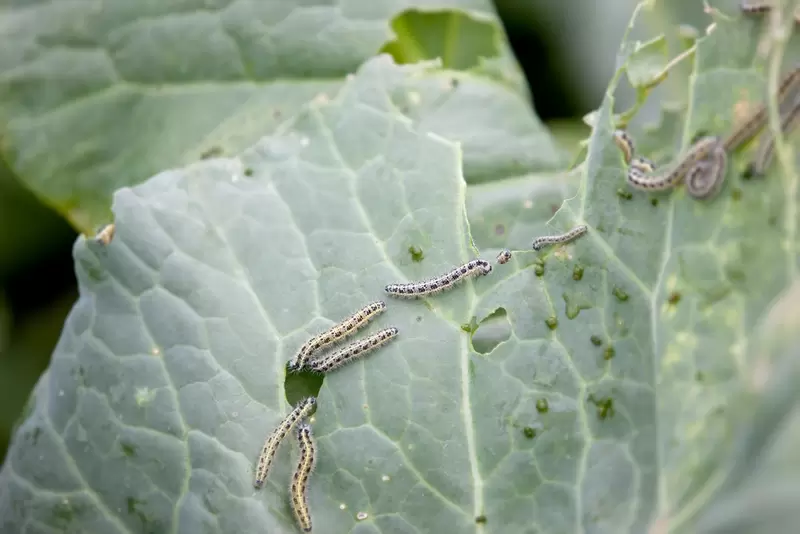
If you grow cabbage, kale, or broccoli, you’ve probably met the green, inch-long cabbage worm. These little guys blend perfectly with the leaves, making them tricky to spot until you notice the damage — holes everywhere and little black droppings as evidence.
The best prevention is to use floating row covers to keep butterflies from laying eggs on your plants. If you already have worms, handpick them and drop them into soapy water. Bt spray also works effectively on them, just as it does with other caterpillars.
To deter them naturally, try companion planting. Herbs like thyme, sage, and dill can confuse adult butterflies and reduce egg-laying. Maintaining a diverse garden helps too — the more variety you have, the harder it is for pests to take over.
7. Mealybugs
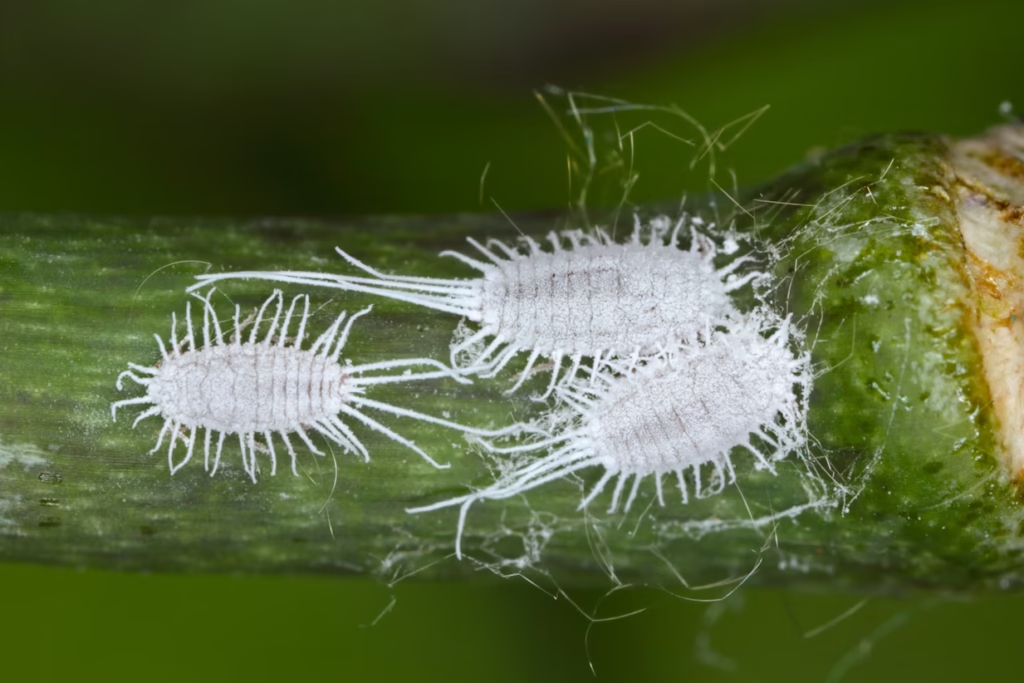
Mealybugs are small, white, cottony pests that suck the sap from plants, often gathering at leaf joints or along stems. You’ll notice a waxy residue and sticky leaves that can attract ants. They’re common on indoor and tropical plants, and once they appear, they can spread quickly.
For mild infestations, dip a cotton swab in rubbing alcohol and dab the bugs directly — it dissolves their protective coating. For larger issues, spray neem oil or horticultural soap weekly until they’re gone. I’ve found neem oil especially effective because it not only kills the bugs but also prevents them from coming back.
Ladybugs and lacewings are also natural predators of mealybugs. If you have a garden full of flowers and herbs, they’ll likely show up on their own. Just avoid overwatering and overfertilizing, as lush, soft growth tends to attract mealybugs in the first place.
8. Cutworms
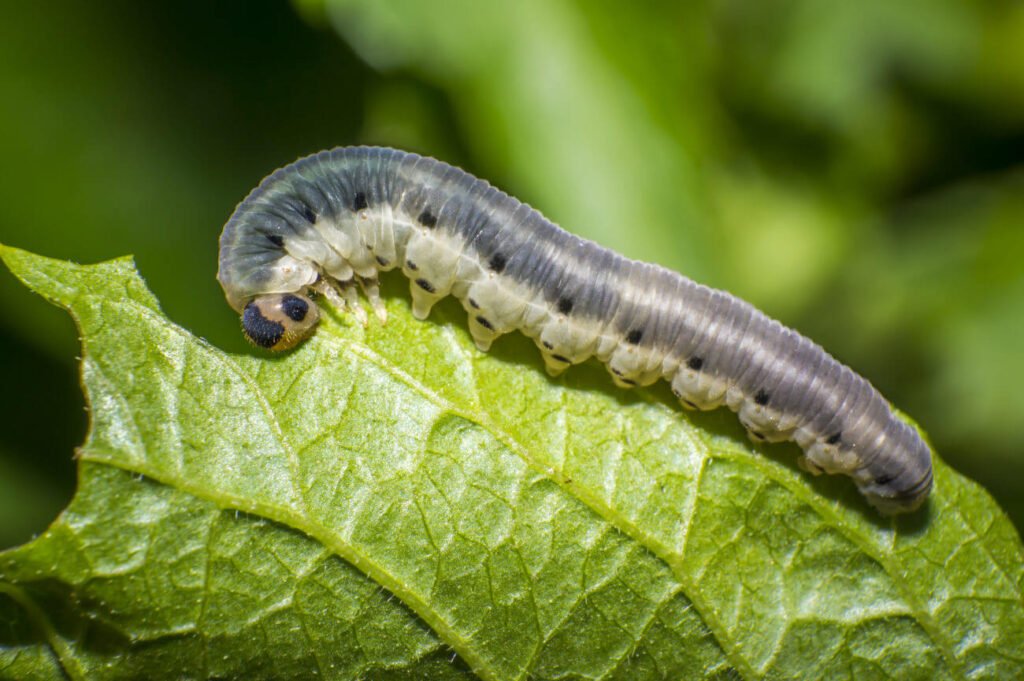
Cutworms are sneaky caterpillars that live in the soil and attack seedlings at night, slicing them off right at the base. I’ll never forget the first time I planted a bed of marigolds only to find them all toppled by morning — it was heartbreaking.
The simplest organic fix is to make collars around young plants using cardboard or tin foil. Bury them about an inch deep into the soil so the worms can’t reach the stems. Turning the soil before planting can also expose and eliminate hidden larvae.
Sprinkling diatomaceous earth around seedlings works as a natural barrier — the fine powder dehydrates soft-bodied insects without harming your plants. Encouraging birds and beneficial beetles will also help keep cutworm populations under control naturally.
9. Japanese Beetles
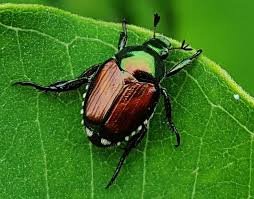
Japanese beetles are hard to miss with their shiny green bodies and bronze wings. They chew through leaves and flowers, leaving behind skeletonized remains that make your garden look ghostly. These pests can be especially tough on roses and fruit trees.
To manage them, start by handpicking beetles early in the morning when they’re sluggish. Drop them into a bucket of soapy water. Neem oil spray helps disrupt their feeding and reproduction cycles. For long-term control, treat your soil with milky spore powder to target the larvae before they become adults.
Planting natural deterrents like garlic, tansy, or catnip can also help repel them. And remember — birds love Japanese beetles, so attract them to your garden with feeders or birdbaths. It’s one of the most pleasant ways to balance nature’s scale.
10. Squash Bugs
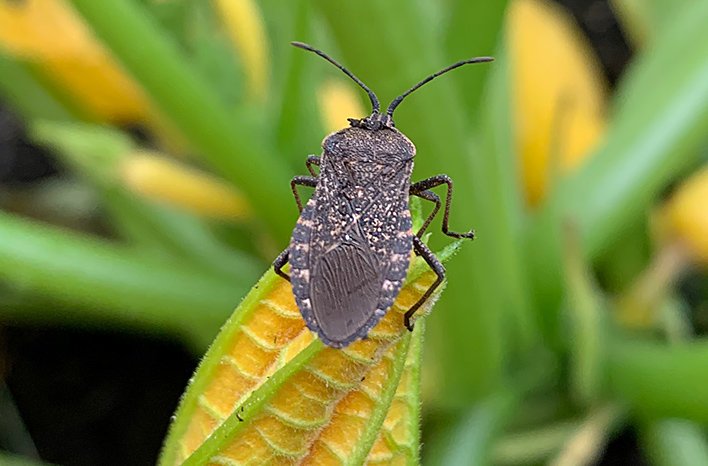
Squash bugs are flat, brownish insects that attack squash, zucchini, and pumpkins. They suck the sap from leaves, causing them to wilt and dry out. You’ll often find their bronze-colored eggs in neat clusters under leaves — a sign that trouble is brewing.
The key to managing squash bugs is persistence. Check the undersides of leaves regularly and remove any egg clusters by hand. You can also lay boards or pieces of cardboard around your plants — squash bugs hide under them at night, making morning collection easy.
Neem oil or insecticidal soap can help with larger infestations. Keeping your garden tidy and rotating crops yearly reduces their hiding spots and breaks their breeding cycle. Companion planting with nasturtiums or radishes may also help deter them naturally.
Preventing Future Pest Problems
Prevention is the most powerful pest control tool you can have. Healthy soil produces strong plants that naturally resist pests. Regularly adding compost, rotating crops, and avoiding overcrowding helps keep your plants in top shape.
Companion planting is another simple way to maintain balance. Pair pest-repelling plants like marigolds, basil, or chives with your veggies to deter insects. The more variety you have, the less attractive your garden becomes to a single type of pest.
Finally, make it a habit to inspect your plants a few times a week — especially under the leaves where pests love to hide. Catching problems early means less damage and fewer headaches later. Over time, you’ll start to recognize the signs and respond before infestations get out of hand.
Final Thoughts
Gardening organically isn’t about perfection; it’s about partnership. When I stopped fighting nature and started working with it, my garden became healthier, more balanced, and surprisingly low-maintenance. Sure, I still spot a slug or aphid now and then, but I’ve learned that a few pests are part of a thriving ecosystem.
Using organic methods isn’t just good for your plants — it’s good for your peace of mind. You’ll know that what grows in your garden is as natural as it gets, untouched by chemicals and full of life.
So, grab your spray bottle, invite a few ladybugs over, and reclaim your garden the natural way. Have you tried any organic pest control tricks that worked wonders? I’d love to hear your go-to methods in the comments!

